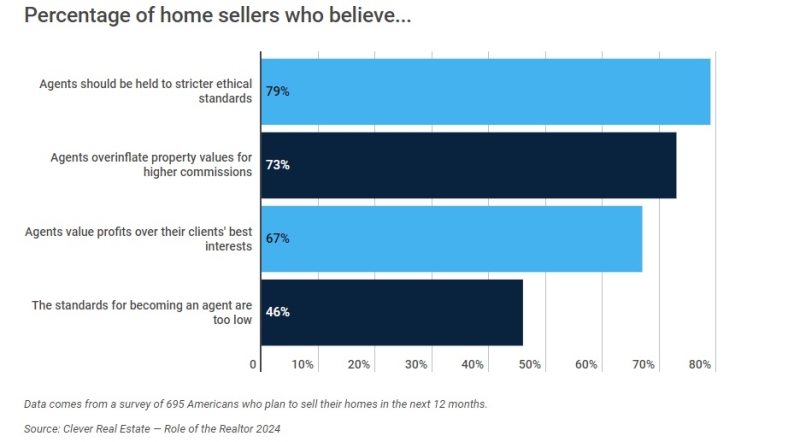Advertisement
E-mail lead incubation helps brokers hatch closed loans from dead leads
Appraiser's Perspective: The construction loan and the appraisal Charlie W. Elliott Jr., MAI, SRAconstruction lending, risky market, "construction to perm" loan, Uniform Standards of Professional Appraisal Standards
While many in the mortgage and appraisal fields normally think
of an appraisal being prepared only on an existing home, this is
not always the case. Most, if not all, homes built with the aid of
construction financing in today's market require a pre-construction
appraisal.
This appraisal is prepared, as the name implies, prior to the
construction of the home. Typically, the owner will have selected a
building site as well as a set of plans and specifications for the
home prior to applying for the loan. Upon application, it becomes
the responsibility of the appraiser to appraise the subject
property in accordance with the plans and specifications provided
by the owner, assuming all work is complete. In the appraisal
field, this type of appraisal is often referred to as a
"hypothetical appraisal" or a "subject to appraisal."
In the past, construction lending has been in a niche market,
much unto itself. Many mortgage lenders have considered it to be a
risky market and have done little, if any, construction lending.
Many savings and loans of the past would defer participation in
such loans to commercial banks, rather than assume the risk
associated with the construction and hope to make a permanent loan
on the property once the construction process was finished. As has
been the case with so many other things lately, this has changed.
As mortgage companies have become more aggressive in obtaining
market share, they have also been willing to assume the additional
responsibility of providing construction financing, not only in an
effort to benefit from the revenue associated with the loan during
construction, but to also obtain the permanent loan once the
construction is complete. Many mortgage companies have established
one-stop products available to customers building new homes. These
products often require only one closing, therefore eliminating the
additional expense and services associated with a second closing,
including a second appraisal. This type of loan, referred to as a
"construction to perm" loan, has become more of the norm in recent
years rather than the exception.
As mortgage companies have sought new home loans, many have
developed large processing centers to facilitate the construction
phase of the loans. Many have not only used their retail sales
forces, but have also begun to rely highly upon brokerage companies
as a wholesale source for construction loans. With this came a
large number of pre-construction appraisals, generated from a
variety of sources on a variety of different types of residential
property.
From my experience, I believe that there is room for improvement
in the area of pre-construction appraisals, particularly where
wholesale originators are involved. Typically, problems arise in
the form of delays, such as many back and forth phone calls,
various amended documents and sometimes the loss of loan customers
due to their frustration with the situation.
This does not have to be the case and there is plenty of blame
to go around when this occurs. Most of the problem stems from
orders for appraisals that contain inadequate information about the
project contemplated. Many times, this does not come to light until
the package reaches the desk of the underwriter. Lack of
communication, between and among the lender funding the loan, the
wholesale broker and the appraiser, is probably the case here.
In an attempt to assist the lender who may have limited
experience and/or direction with pre-construction appraisals, which
are designed to be used with permanent loans destined to be sold on
the secondary market, I offer the following suggestions.
When ordering the appraisal, please ensure that:
1. There is a complete set of plans and specifications submitted
to the appraiser. These plans should be sufficient for the
appraiser to develop a full understanding of the project to include
the quality of the construction. We are talking about detail
specifications and working drawings here, not copies of artist
renderings of homes from a house-plan magazine.
2. A plot map is included showing the placement of the home on the
site. Unrecorded property plats representing portions of tracts of
land or undefined parcels of land showing no plot maps are
unacceptable.
3. If applicable, a copy of the sales contract for the purchase of
the site should be included.
4. The appraiser is provided a signed copy of the builder's
construction contract to include a summary breakdown of the costs
for all components of the project to the extent such information is
available.
It is not unusual for a borrower to attempt to save money by
entering into an agreement with a builder with incomplete or
inadequate plans, or to avoid hiring a surveyor to do a proper
survey on a building site. Not only is this a time bomb waiting to
explode between the builder and the borrower, but the same problem
will also exist between the borrower and the lender if it is
permitted. Furthermore, the appraiser will not be able to comply
with Uniform Standards of Professional Appraisal Standards if he
cannot properly define the improvements to be built. While having
adequate descriptive information about a property is always
important to an appraiser, this problem is magnified when dealing
with to-be-constructed improvements, as there is little that can be
observed from an inspection of the vacant site relative to what
will be constructed on the site.
In summary, the construction-to-perm loan is a specialty product
allowing the loan originator another arrow in his quiver of
services to be offered to a client. It can provide lucrative
opportunities for the lender when properly handled. It can also
prove to be a big fat waste of time and can result in damaging
relationships when not handled properly. Some of the best advice I
know of here is that of the Boy Scout motto: "Be prepared." The
list above should go a long way in the direction of setting the
stage for a smooth construction-loan appraisal transaction.
Charlie W. Elliott Jr., MAI, SRA is president of Elliott & Company
Appraisers, a national real estate appraisal company. He can be
reached at (800) 854-5889, [email protected] or
through the company's Web site at www.appraisalsanywhere.com.
Previous columns he has written for The Mortgage Press can
be seen on the Elliott & Company Web site.
About the author





